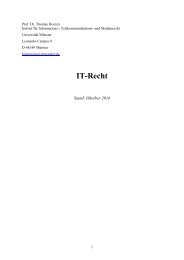3d4yVkKMl
3d4yVkKMl
3d4yVkKMl
Create successful ePaper yourself
Turn your PDF publications into a flip-book with our unique Google optimized e-Paper software.
- 20 -<br />
34. Australia rejects Japan’s interpretation of its reservation, maintaining that<br />
“the reservation only operates in relation to disputes between Australia and another<br />
country with a maritime claim that overlaps with that of Australia that is, a<br />
situation of delimitation. Australia has no delimitation [dispute] with Japan and hence<br />
the paragraph (b) reservation can have no operation.”<br />
It adds that “[i]n particular, the reservation does not cover a dispute concerning the validity, or<br />
otherwise, under the 1946 Convention, of Japan’s JARPA II programme, a dispute entirely<br />
unconnected with any delimitation situation”.<br />
According to Australia, the intent underlying the reservation was to give effect to its “belief<br />
that its overlapping maritime claims are best resolved by negotiations”, especially the complex<br />
maritime boundary delimitations with New Zealand and Timor-Leste that were ongoing at the time<br />
the declaration was made. Australia maintains that the wording of the reservation is to be<br />
understood against this background. Thus, the purpose of the second part of the reservation “is to<br />
make clear [that] the reservation extends beyond disputes over delimitation of maritime zones per<br />
se, to associated disputes concerning [the] exploitation of resources that may arise between the<br />
States with overlapping maritime claims pending delimitation”.<br />
Australia also contests Japan’s view that the dispute over JARPA II is about “exploitation”<br />
in the sense of its reservation, arguing that the exploitation contemplated by the reservation is<br />
“exploitation of resources covered by a potential delimitation arrangement and not any exploitation<br />
unrelated to that delimitation situation that happens to occur in the relevant geographic area”.<br />
35. Australia furthermore contends that the geographic area of operation of JARPA II, which<br />
in any event extends well outside any waters claimed by it, cannot determine the Court’s<br />
jurisdiction over a treaty dispute that is unrelated to the status of the waters in which the activity<br />
occurs. According to Australia, “[t]he dispute before the Court concerning compliance of<br />
JARPA II with the whaling Convention exists whether or not Australia asserts maritime zones<br />
adjacent to Antarctica and irrespective of any delimitation with adjacent claimants”. Australia<br />
emphasizes that, in the maritime context, the word “delimitation” has a specific meaning, referring<br />
solely to “the fixing of boundaries between neighbouring States, whether adjacent or opposite”.<br />
36. The Court recalls that, when interpreting a declaration accepting its compulsory<br />
jurisdiction, it “must seek the interpretation which is in harmony with a natural and reasonable way<br />
of reading the text, having due regard to the intention” of the declaring State (Anglo-Iranian Oil<br />
Co. (United Kingdom v. Iran), Preliminary Objection, Judgment, I.C.J. Reports 1952, p. 104). The<br />
Court noted in the Fisheries Jurisdiction case that it had “not hesitated to place a certain emphasis



